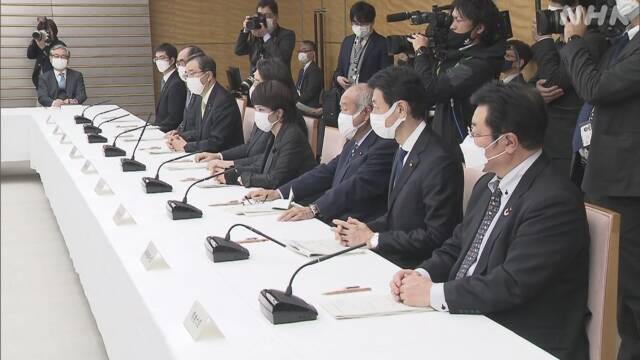Regarding the position of the new corona under the Infectious Disease Law, the government decided on May 8th to move to "Type 5".
For the transition, there are issues such as the medical care provision system for accepting patients at general medical institutions, and the government is working with local governments to accelerate preparations.
On the other hand, the Ministry of Health, Labor and Welfare plans to switch from ``knowing all the infected people'' to ``fixed-point grasping'', which is implemented for seasonal influenza, with regard to the method of grasping the epidemic situation. I am going to start.
Regarding the status of the novel coronavirus under the Infectious Diseases Control Law, the government announced at the task force on the 27th that on May 8, after the long holidays, it will be changed from the current "type 2" to "type 5", which is the same as seasonal influenza. I have decided to move.
Prime Minister Kishida said, ``We will further advance our efforts to deal with COVID-19 and make steady progress so that we can return to everyday life in all situations.''
After the transition to "Category 5", general medical institutions will be able to accept and treat COVID-19 patients, and it is expected that the medical crisis will be alleviated.
However, for general medical institutions, there are issues such as the introduction of new infection prevention measures when accepting patients and the construction of an appropriate medical care system, such as securing the necessary beds. to
On the other hand, in order to prevent a sudden increase in the burden on patients with regard to the medical expenses of the new coronavirus, the policy is to continue to cover public expenses after setting a deadline. I'm going to show you how to do it.
Regarding masks, regardless of whether they are indoors or outdoors, the policy is to review the use of masks based on individual judgment, and the timing of the review will be considered while assessing the infection status.
Ministry of Health, Labor and Welfare to change from ``knowing all numbers'' of infected people to ``fixed point grasping''
In order to grasp the epidemic situation of the new corona, medical institutions and public health centers are currently conducting a "total grasp" in which all infected people are reported. It is a policy to switch to a "fixed point grasp" that reports to a designated medical institution.
"Fixed-point monitoring" is implemented for seasonal influenza, and about 5,000 medical institutions nationwide are designated, and the number of infected people and the epidemic situation are announced once a week.
The Ministry of Health, Labor and Welfare will start examining the method of selecting medical institutions at a subcommittee of experts in early next month, referring to the method for seasonal influenza, and will present a policy as soon as possible.
In addition, we are considering continuing monitoring by genome analysis to understand the occurrence of new mutations, while considering the burden on local governments.
In addition, the number of people who have died is currently being grasped based on reports from local governments nationwide and "Vital Statistics". I am considering whether it is possible.
What are the medical issues in transitioning to “Type 5”?
In the current category 2, hospitalization is limited to medical institutions designated for infectious diseases and medical institutions recognized by prefectures, and examinations are mainly conducted at fever outpatient clinics where infection control measures are taken. .
After the transition to "Category 5", the policy is to gradually shift to a system in which a wide range of medical institutions will be able to respond, and it is expected that the burden on medical institutions will be reduced as they will be able to accept hospitalizations and examinations even at general medical institutions. It has been.
However, there are concerns that some medical institutions may not be able to accept patients due to insufficient infection control measures within the hospital, such as zoning, which separates areas with high risk of infection from areas with low risk. .
For this reason, the focus is on whether the government will continue to provide financial support to local governments and medical institutions, such as the cost of infection control in hospitals and the cost of securing hospital beds.
In addition, there is an opinion that it is necessary to continue the hospitalization adjustment currently being carried out by public health centers for a certain period of time.
Of the medical expenses paid by patients, the costs of hospitalization and examinations are currently covered by public funds under the Infectious Diseases Control Law, and the costs of outpatient care and treatment drugs are also covered by public funds through budgetary measures.
After transitioning to Category 5, in principle, you will be responsible for the costs of hospitalization and examinations that are not covered by insurance.
In addition, if public expenses such as outpatient medical expenses are reduced, patients will have to bear the cost of expensive medicines, and there are also concerns about cases in which infection is detected and treatment is delayed due to waiting to see a doctor. .
For this reason, for the time being, it is a policy to review in stages after continuing the burden of public funds.

